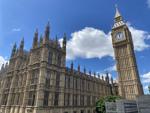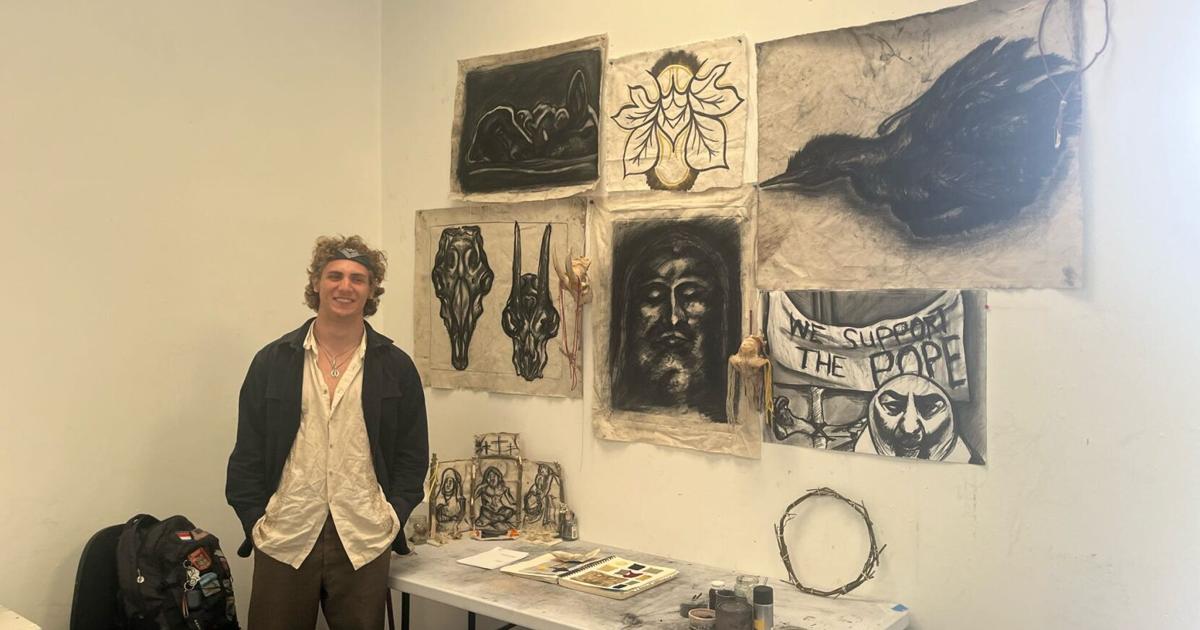From my short experience in Ballyvaughan, Ireland, outrageous events seldom occur. Besides the regular trad music session at the Burren Bar, the town sits quietly on County Clare’s Fertile Rock.
Ballyvaughan made me slow down, see the intricacies of each plant around me and acknowledge the smallest forms of life. Ireland — especially the Burren — holds the environment in high regard: one can’t pick uncommon flowers or leave their trace.
I like to believe I understood my connection with nature before my trip to Ireland, but my course exposed me to a new facet of my dynamic with the planet — sustainable art practices.
I studied sustainable art for most of June at the Burren College of Art with a Penn State study abroad program. We made eco prints and dyes with the local common plants and used them to color strands of wool.
I found these lessons important, as I value self-sufficient practices. Our lesson on charcoal-making redefined how I will practice art in the future.
Something about throwing punctured molasses tins full of bramble twigs, fallen willow branches and teeth from sheep skulls into a fire deeply fascinates me. Each material produces a different thickness, darkness and durability; yet they’re reliable nonetheless.
Since my senior year of high school, charcoal has been my favorite medium. I know exactly how it will mark the paper, how to get the darkness I want and how to move with the material.
Depending on the canvas size and time, I can achieve realism — especially when combined with a pencil (though no pencils were used in Ireland).
Knowing how to make my materials increases my connection to my work, especially with such an instinctual process.
Similarly, drawing feels innate. I know it’s ingrained in my DNA because of my father’s side of the family. My uncles were/are artists and my grandpa Cap still longs for the day one of his grandchildren studies art.
The last time I saw him, he asked me why I left Monmouth University, where I studied art and why I switched to English and philosophy at Penn State.
I told him I didn’t see a future in art and intended to study law after undergrad. I don’t recall my reply satisfactorily.
Though I don’t regret changing my major, taking my first art class in two years this summer made me realize how much I missed art and the simple act of creating.
I guess my grandfather’s wishes to have another artist in the family hold merit because art satisfies something in me that I left behind in my first year of university.
The Burren reminded me that I can create — not just drawings, but the materials I use, too. My newfound practices allow me to repurpose what was once discarded — by man or plant — and use it to resurrect the art and material.
This idea of resurrection permeated through my inquiry this summer.
Inspired by the Städel Museum’s triptych collection depicting Jesus’s removal from the cross and its special exhibit on Käthe Kollwitz’s drawings, I knew I wanted to combine Christian iconography’s power with Kollwitz’s dark expressionism.
My installation embodies environmentalism and the miles I traveled this summer with drawings of sheep heads from Langa Township, South Africa, dead sea birds on Inisheer’s shore and skulls from the Burren.
Though the charcoal and Christ suggest purification and transformation, the death in my installation still suggests an end I’m not ready to face despite its prevalence in my life over the past three years.
As I sit at my desk in Pittsburgh, my summer travels over for now, I can’t help but think about endings: the inevitable end of summer, the beginning of my senior year and the reluctant end to my installation, which now sits rolled up in my closet.
Like everyone, this next year holds uncertainties, but I can say for certain that next year a large piece of canvas will stretch across my basement’s floor and homemade charcoal will fill the air.
I left this gift behind once already, and I’m not willing to let it go again — especially after my time in Ireland.
MORE OPINION CONTENT

“Live from London, it’s Saturday Night!”


